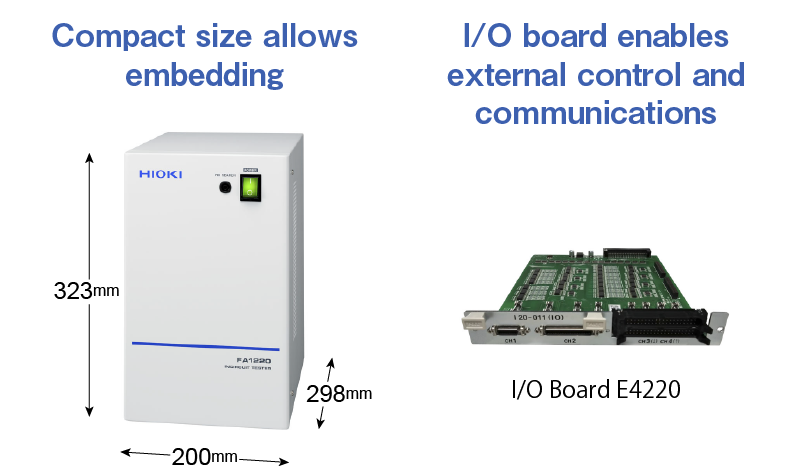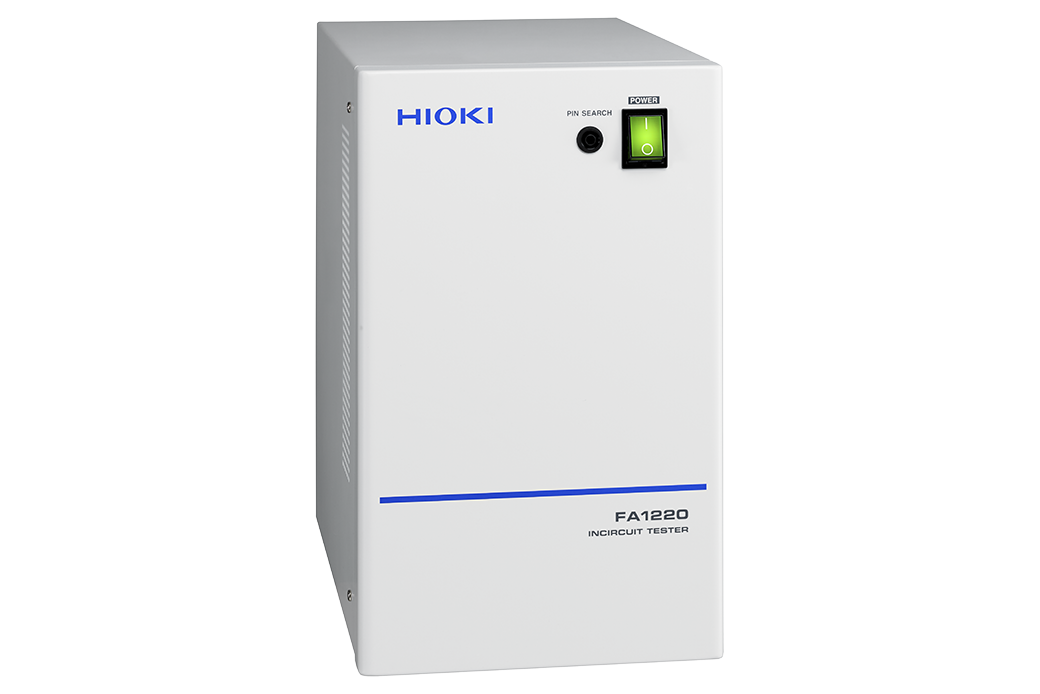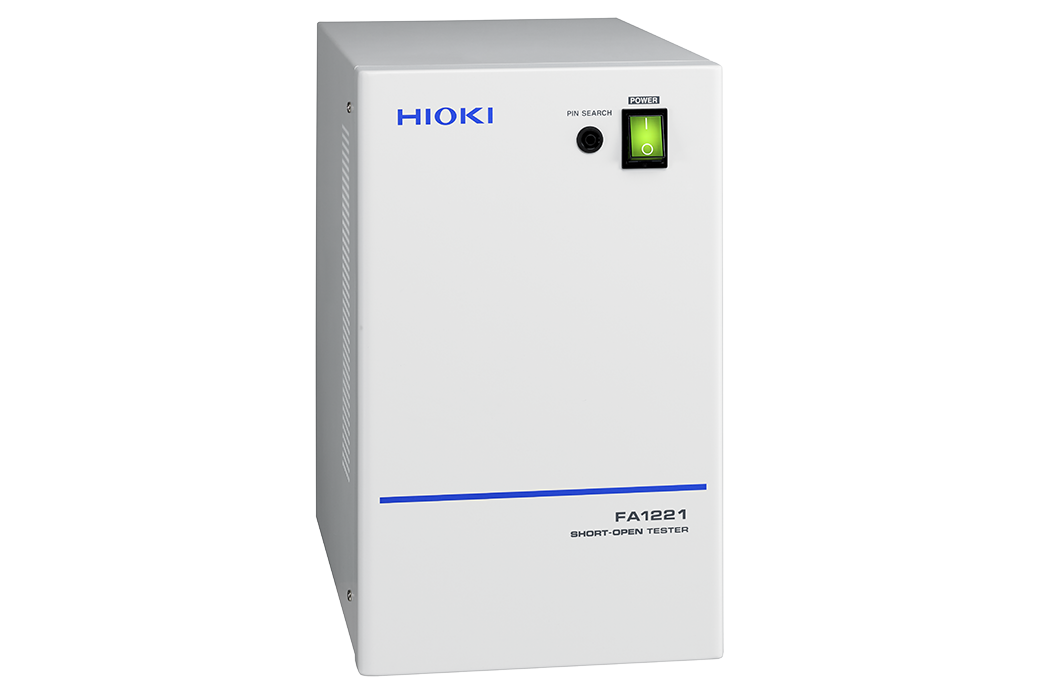Radar Module Testing System
This paper introduces a system that enables high-speed testing of millimeter-wave radar modules, a vehicle component for which demand is growing in connection with self-driving technology, while accommodating fast setup changes on the production line and software creation.
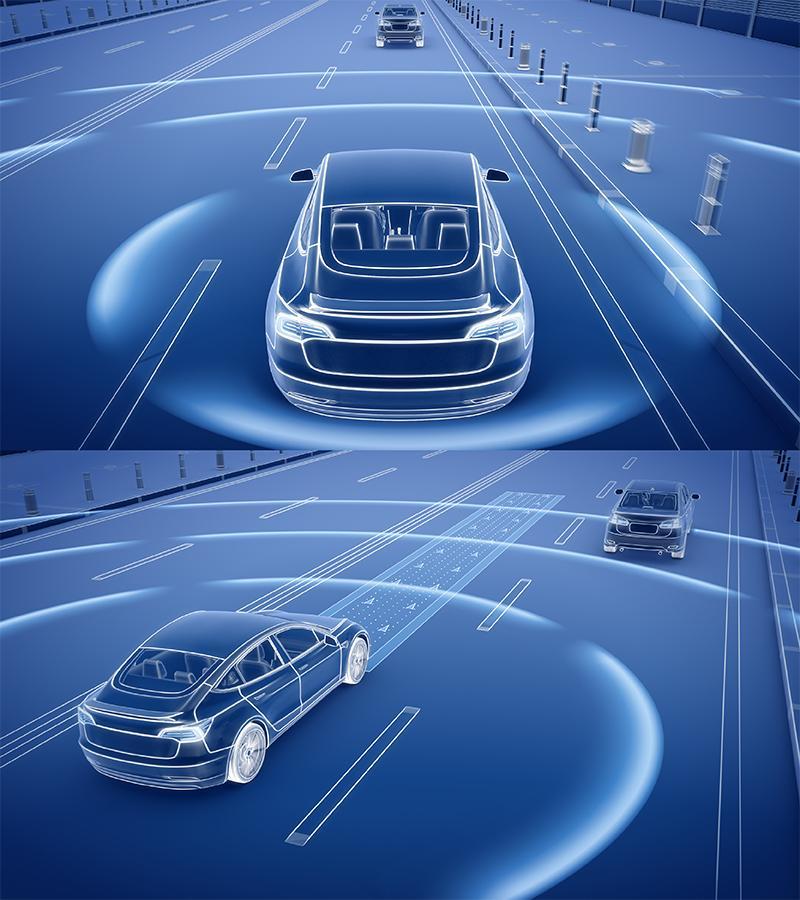
Growing Demand in Self-driving Vehicles
Adoption of advanced driving assistance systems (ADAS) is fueling rapid growth in demand for millimeter-wave radar systems in vehicles. There are already front and periphery monitoring systems available. Rear monitoring systems will be added in the future, and worldwide efforts are underway to develop laws and regulations, for example requiring front monitoring systems to provide more advanced functionality.
Engineers are also attempting to equip robots, drones, and other unmanned devices with such systems.
Since millimeter-wave radar systems are utilized to ensure safety, malfunctions are unacceptable, and high quality and high reliability are a must. Consequently, it will be key to deliver quality improvements at manufacturing facilities as well as reduced testing takt times as production volumes grow.
This paper introduces a system that can accelerate intermediate testing (testing between production processes) of millimeter-wave radar modules while facilitating fast setup changes on the production line and test software creation to accommodate changes in the models being produced.
Engineers are also attempting to equip robots, drones, and other unmanned devices with such systems.
Since millimeter-wave radar systems are utilized to ensure safety, malfunctions are unacceptable, and high quality and high reliability are a must. Consequently, it will be key to deliver quality improvements at manufacturing facilities as well as reduced testing takt times as production volumes grow.
This paper introduces a system that can accelerate intermediate testing (testing between production processes) of millimeter-wave radar modules while facilitating fast setup changes on the production line and test software creation to accommodate changes in the models being produced.

Issues in Millimeter-wave Radar Module Intermediate Testing
Intermediate testing of millimeter-wave radar modules consists of the tests described in the table to the right. In the past, testing systems consisted of a “bed-of-nails” fixture with a probe for each test point, a relay circuit for switching circuits, measurement instruments (such as a resistance meter, multimeter, and LCR meter), a DC power supply, a computer or PLC to control these components, and a program to execute test sequences. This approach suffers from the following issues:
- Inability to shorten test cycle time due to the difficulty of switching circuits and synchronizing measurement instrument control
- Significant amount of time required to create test sequences for different models DUTs because programs lack versatility
- Significant amount of time required to identify issues underlying equipment failures (poor maintainability)
- Significant amount of time required to create test sequences for different models DUTs because programs lack versatility
- Significant amount of time required to identify issues underlying equipment failures (poor maintainability)
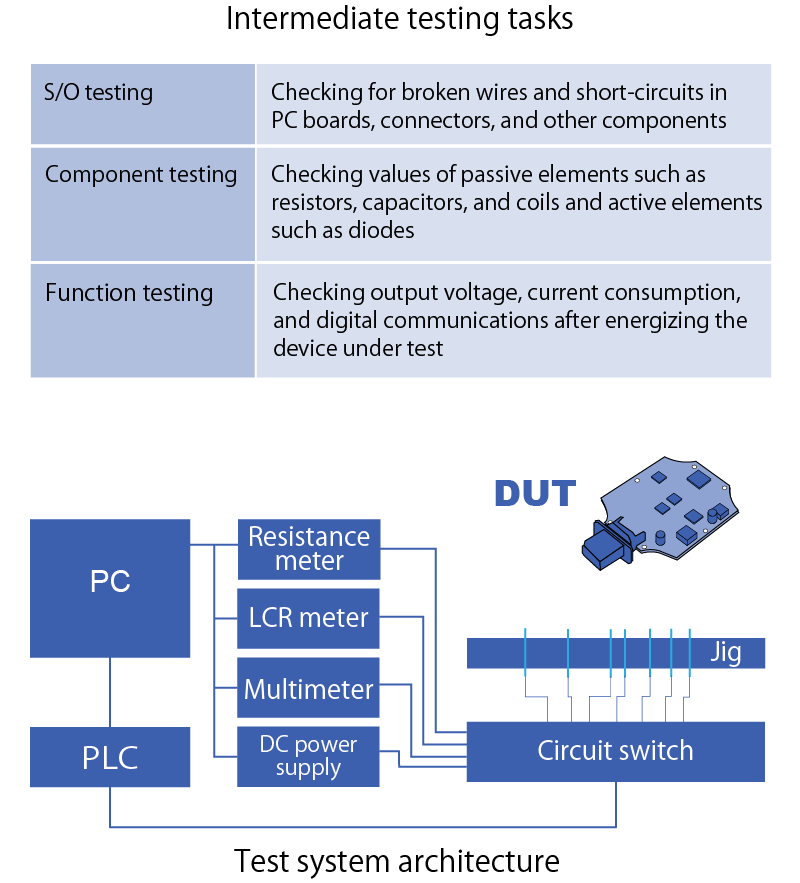
Realizing High-speed Testing and High Maintainability
The In-Circuit Tester FA1220 is a combination of a circuit-switching device (scanner), electric measurement instruments, and a DC power supply inside a compact enclosure. It operates according to test sequences created using a desktop software in order to successfully address challenges posed by intermediate testing of millimeter-wave radar modules.
- High-speed testing is made possible by the optimized synchronization of the system’s built-in scanner, measurement circuit boards, and power supply.
- Create test data in a short period of time using the system’s software.
- Self-test functionality can automatically identify issues in the event of equipment failure.
- High-speed testing is made possible by the optimized synchronization of the system’s built-in scanner, measurement circuit boards, and power supply.
- Create test data in a short period of time using the system’s software.
- Self-test functionality can automatically identify issues in the event of equipment failure.
- Self-test functionality can prevent erroneous judgments and shipment of defective products.
Growth in millimeter-wave radar module production volume will likely lead to an increase in the number of manufacturing facilities facing the need to achieve both higher quality and shorter test takt times.
The In-Circuit Tester FA1220 holds the potential to successfully address the needs of such facilities.
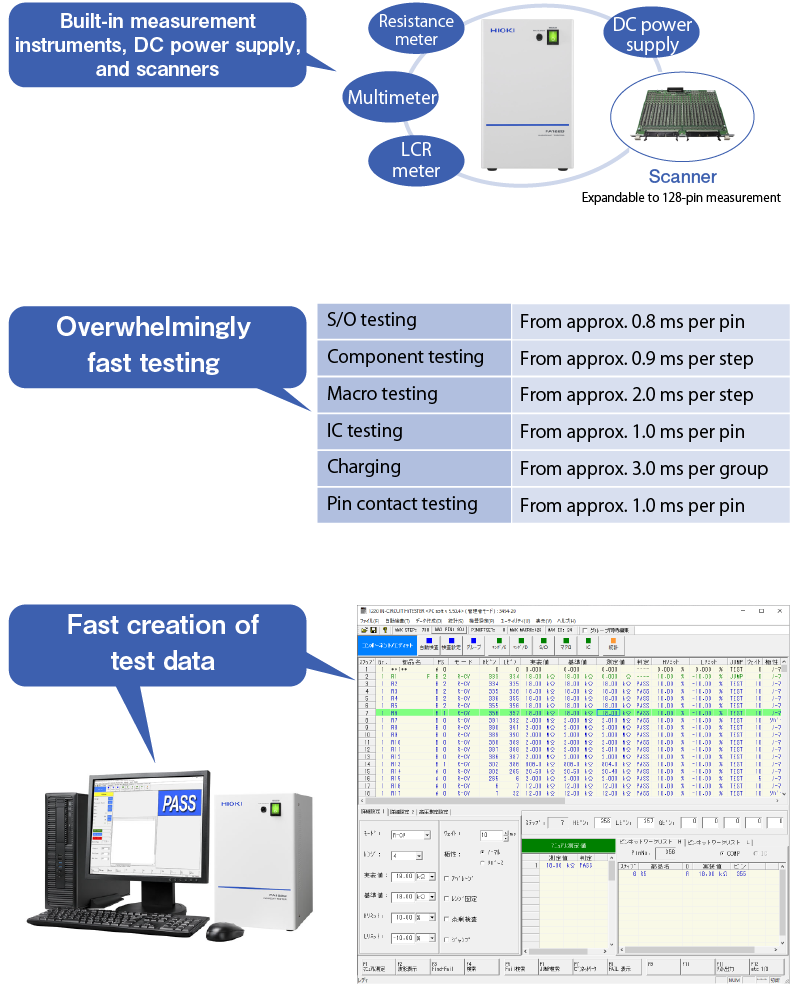
Functionality and Concept that Make it Possible to Embed the FA1220 into Other Equipment
Despite its compact size, the In-Circuit Tester FA1220 has the ability to be customized with additional scanners for measurement of up to 1,024 pins.
An I/O board allows the system to be controlled from an external source. For example, an external device can start the testing or receive the judgment results.
In this way, the FA1220’s functionality and specifications well-suited to integration into the user’s own systems.
An I/O board allows the system to be controlled from an external source. For example, an external device can start the testing or receive the judgment results.
In this way, the FA1220’s functionality and specifications well-suited to integration into the user’s own systems.
